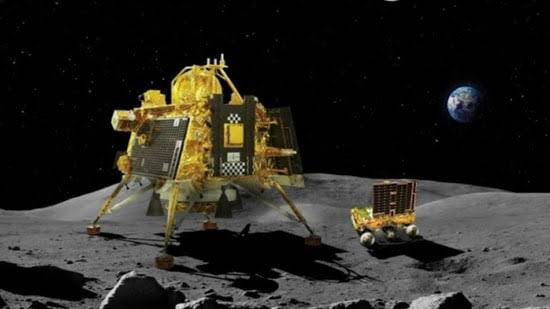With just 48 hours to go before Chandrayaan-3 attempts its gentle touch down at the southern pole of the Moon, the Indian Space Research Organisation (ISRO) announced on Monday that the lander module (LM) has established a seamless two-way communication link with the orbiter of the preceding Chandrayaan-2 mission. Although the lander from the Chandrayaan-2 mission encountered a setback, the PRADAN orbiter is presently in a lunar orbit measuring 100 km by 100 km. In a recent post on X (formerly Twitter), ISRO shared that the orbiter has extended a hearty greeting to the Chandrayaan-3's lander module, comprising the Vikram lander and the Pragyan rover.
"‘Welcome, buddy!’ the Ch-2 orbiter formally greeted the Ch-3 LM. The two-way communication is now established," the space agency stated in its post.
With preparations in place for landing, ISRO will initiate internal assessments on the landing module. The powered descent is scheduled to commence on August 23 at approximately 5:45 pm, and Vikram is poised to touch down on the lunar surface around 6:04 pm.
Landing Timed with Lunar Sunrise
Elucidating the reason for scheduling the landing on the day of lunar sunrise, ISRO Chairman S Somanath mentioned, "We intend the landing to coincide with the Moon's sunrise to gain 14-15 Earth days for operations. If the landing cannot be accomplished within the first two days (sunrise and the following day), we'll wait for another month and proceed in September".
Vikram and Pragyan (the rover) are designed to operate for one lunar day (equivalent to 14 Earth days) powered by solar energy, although the possibility of extending their operational life is not entirely ruled out.
As per Somanath, "Once the Sun sets, the lander and rover will lose power, causing all equipment to cease functioning. Nonetheless, our tests reveal the potential for battery recharge during the subsequent sunrise. If that occurs, we could potentially have another 14 days or more".
Upon a successful landing, Pragyan will descend from Vikram—its journey captured by the lander's cameras—and proceed to traverse the lunar terrain using its wheels. Pragyan is also equipped with obstacle avoidance cameras.
A New Space Race
A prosperous soft landing on the Moon would position India as the fourth nation globally to achieve this feat, following in the footsteps of the United States, Russia, and China. India would also secure the distinction of being the first country to land at the lunar south pole.
Russia had been in a race with India, China, and the United States, all of which hold ambitious lunar goals, to be the first to touch down at the Moon's south pole. This location is of particular interest to scientists due to the presence of water ice, which holds potential importance for future human exploration missions.
Russia's Luna-25 spacecraft, however, met with failure as it crashed into the Moon following a technical glitch, spiraling into an uncontrolled orbit. Over the next couple of years, around 10 other lunar missions are planned, involving countries such as the US, Israel, China, Japan, and India. This includes both independent missions and collaborations, with the overarching aim of reinvigorating lunar exploration and establishing a more sustainable presence on the Moon.






